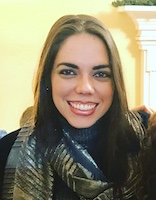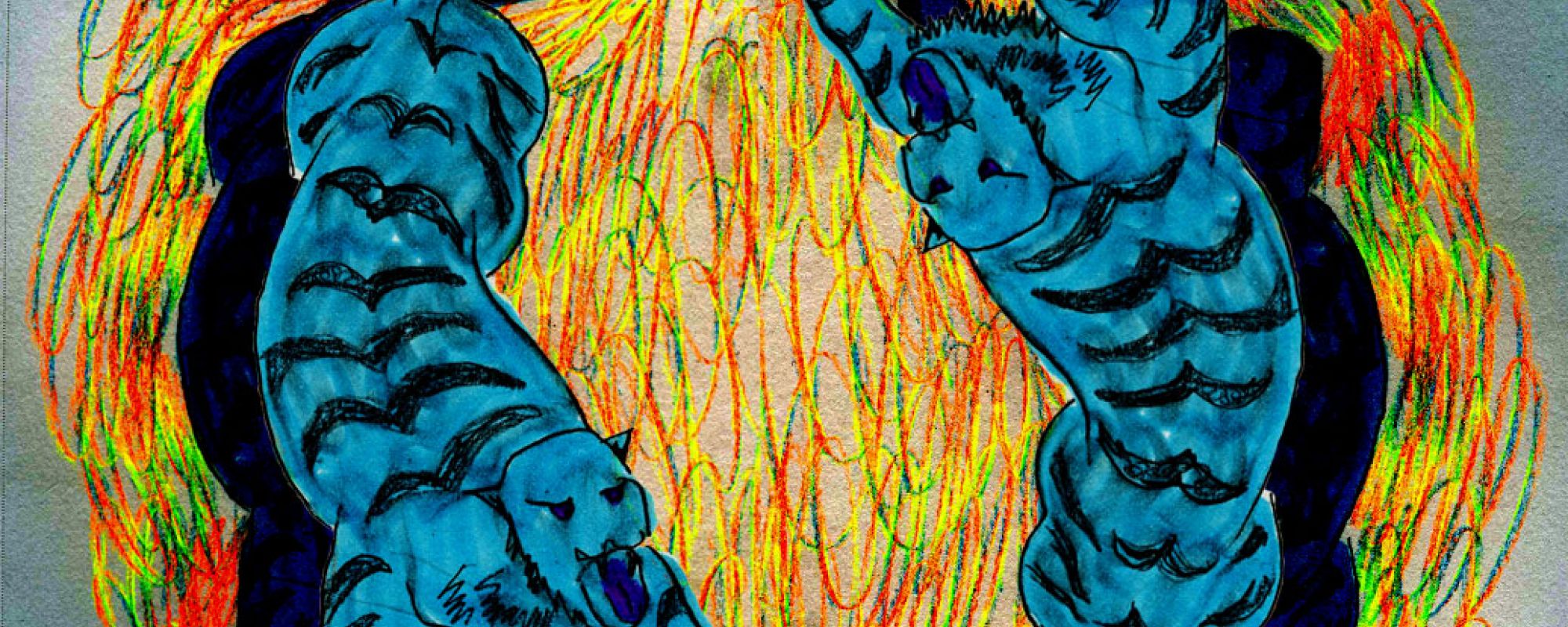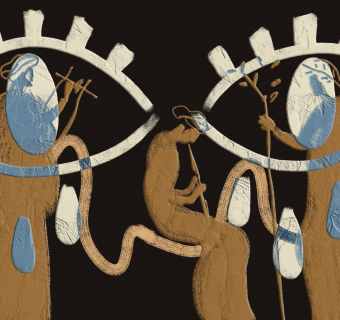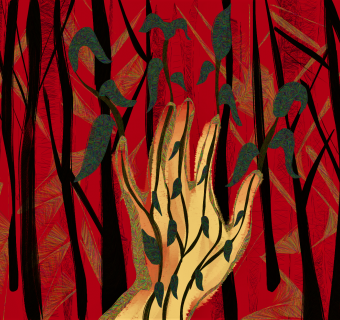I was in the middle of teaching one afternoon when a man died right outside my classroom door.
A scream cut through the air. And then another. And another. I froze. I had just launched into the class’s next composition prompt, when one of my students, Adam, came in the door. He wasn’t usually late to class. His freckles contrasted on his face more than usual because his skin was ashen, like he had just been sick to his stomach. I knew he had seen something in the hallway, and from the sound of the screams, I could tell that an older woman was running down the entire length of the hall. Her screams came from deep in her belly, staining the air with grief. It felt excruciating. And suddenly, just as quickly as the screaming began, it stopped.
My eyes had glazed over, but then through the haze, I saw twenty-six scared faces looking at me. Adam tried to hide the tears trickling down the sides of his cheeks. Time stood still. I have gone over that moment a million times in my head because what I did next is unthinkable to me now.
I did absolutely nothing.
I literally kept teaching. Whatever I said was like loose cotton in my mouth. There was a split second when I felt like I didn’t know what to do, and then just as seamlessly as a drop of water falls from a spigot, I continued. Así que vamos a hacer dos versiones de la composición y al final tendremos dos borradores completos....And without protest, the students followed my lead. I kept speaking; the air wasn’t enough for my words, but I finished explaining the composition prompt and then divided the class to work in groups. As they began to converse, I went to Adam.
“Are you okay? What happened? Do you need anything?” Adam responded like a robot:
“A man died right out there. A custodian. I found him.” His voice barely a whisper, he looked down at the ground and wiped his eyes. “His wife also works here in the building. Somebody called her and...” Adam trailed off.
“Do you want to leave? Do you have someone you can call? Why don’t you go home for today? You don’t have to sit through this.” I motioned to the groups’ conversation. I was on autopilot. The class buzzed with Spanish. I started to get a pain above my eyebrows, a throbbing that was almost blinding by the time the class was over. I couldn’t shake this terrible feeling of guilt. I felt that I had failed.
The woman was screaming, and I did nothing. The woman was screaming, my students were scared, and I did nothing. A man died right there, and I did nothing.
Life started to consist of frozen pizza bites and NyQuil. I was half-way through my PhD coursework in Spanish and Jewish Studies. I had an endless amount of work to do, and even though my readings about Jewish mysticism and Sephardic poetry were interesting, I had lost something of my joy. After teaching, I would come home and surf Facebook, getting lost in endless threads of my friends’ lattes and their rants about Game of Thrones. Then I would mull over their upcoming engagements and the occasional child-rearing nightmare post. Around midnight, I would finally close my laptop, push the books and compositions off to the other side of my bed, and turn off the light.
The darkness would soothe me. My eyes would trace the logical pattern of the ceiling against the walls. It was always the same; not quite a square. If only my life were just as simple. Haunted by the sound of that woman’s screams, I would wake up in the night with my face close to the mattress, gasping for air. I would lie awake, replaying the scene over and over in my mind.
I asked a dozen people what they thought that I should have done. “Well, you could have addressed it somehow,” one said. “You should have locked the door. What if there was a threat?” another added. “You didn’t give space for their trauma. You should have just sent everyone home” was a final remark.
Each comment made me feel worse, but I agreed with them. Their opinions served to confirm a subliminal fear of my own unworthiness that became an occasional struggle for about a year. Ever since Hannah Graham had disappeared from Charlottesville’s Downtown Mall, my perspective shifted. She was found murdered during the second half of the fall 2014 semester, and I was haunted by the fear that I was living a life that someone else deserved. The campus had felt so full of hope and possibility when I started my program, but this untimely encounter with death left me with a feeling of guilt. With the swift spin of a roulette, it was your time. And yet, I remained. I was left to live, and to work, to walk the sidewalks that led to Old Cabell Hall, to stop by Rev Soup, to comment on the repairs on the Rotunda. And to teach. I was left to follow my dreams of becoming a professor, and it just didn’t seem fair.
Most people don’t realize that between three and four am, on weeknights, 14th Street becomes strangely still and peaceful. The black bricks stained with oil and sticky with gum gleam slightly in the light of solitary cars. Time and time again, in the quiet of the night, I would question my reaction that day in class. What if there had been a stampede? What if everyone started to cry? Maybe I wasn’t a good teacher, after all. What if my inaction had permanently scarred my students? The questions kept coming, but mostly at night, when the air was still.
Then, I had a dream:
I was on the sidewalk walking to my office on Hospital Drive, when there was a small flash of light in the bushes. Suddenly, I was in the presence of God.
“What do you want?” I didn’t hesitate.
“I want to know what’s inside of me.”
Without another word, God opened my chest. My sternum split in two, and my head detached from my neck. My rib cage flipped open like angel’s wings, allowing my face to go deep inside the redness of my heart cavity. At first my eyes couldn’t adjust to the darkness, but slowly I could make out the sides of a small chamber formed by intercostal muscles, faintly etched by capillary veins. As I peered in even closer, I saw what was inside of me: there, at the center, lay a majestic blue tiger.
Serene and regal, the blue tiger looked back at me with knowing eyes. It resided there just as calm and gentle as a Zen master. The blue tiger’s unblinking gaze seemed to impart both compassion and wisdom. A blue tiger presiding over this chamber of my interior? I couldn’t help but return to God, surprised.
“A blue tiger.” God repeated after me, not mimicking my incredulous tone. “A blue tiger is what’s inside of you.”
And with another flash of light, I was back. This time, not on the sidewalk, but in my own bed. My face felt the comforting roughness of my gray Jersey sheets. It was daytime. I looked at my phone. I had woken up three minutes before my alarm was about to go off. A blue tiger? I was still surprised.
I reached over to my laptop and Googled images of blue tigers. None of them looked like the one in my dream. The images online were hoaky, weirdly iridescent, and poorly photoshopped. I realized that blue tigers don’t even exist. Orange tigers, white tigers, yes. But no one had ever seen a blue one and that was why all the renditions looked new-agey. Is this what people talk about when they say what their spirit animal is? I wondered. The idea of a spirit animal had always seemed to me to be kind of ridiculous. I got out of bed and forgot all about it.
Weeks passed. Whenever I came across Adam on campus, I made sure to see how he was doing. He was going to therapy. That was good. Occasionally, I would shoot him an email to check in until I realized that he wanted to forget about what had happened, and so did I.
One chilly evening, as I left my office, the dusk was a hazy blue with bits of pink visible through the tree line. There was a university klezmer concert advertised as well as an art show. Lots of people I knew were going, so when they asked me if I was attending, I smiled and nodded, never intending to actually go. But that night, I decided I’d force myself to get out. Music and art always seem to tempt me, and it was my favorite, the Om Shalom Trio, plus an artist from Bombay. Afraid that I would talk myself out of it, I barely looked at the program. “I won’t stay long,” I told myself.
I slinked into the dimly lit gallery, and at first glance, I was spellbound.
I saw signs of war, guns and bodies smushed together, cramped and defensive. In each piece, there was beauty and violence, sensuality and scarcity. As I continued take in the colors, I felt the simultaneous sense of rupture and connection.
Every painting held a mystery to me. I stared deep into the eye of a snake and felt a chill. Would I be able to trample the serpent underfoot? How could I carry on? To the right of the painting, I read: “tikkun haolam in Hebrew, which according to Kaballah means ‘repairing of the world.’” Yes, tikkun haolam had been my motto. I always strove to bring a sense of redemption into the world.
When a professor had suggested I present to the class on a text that depicted a rape of an underage woman, I declined. I wrote him a polite email saying, “In light of the recent events with the rape and murder of Hannah Graham, I feel that I cannot present this material to the class. Please assign me a different text.” And when the professor responded during the next class period by calling me out as “sensitive,” I politely held my ground. No, I didn’t want to present on a passage so similar to the crime that had just destroyed the life of one of our students. No, I did not know Hannah personally. Why did that matter? Does it matter that we don’t know the people who suffer and die around us?
Tikkun haolam can be messy, but the mantra helped me find meaning in every class, paper, and presentation. Tikkun haolam got me through every lengthy office hour with a hopeful undergraduate student. It helped me to find meaning in an often chaotic, tragic world.
Then a man died outside right my classroom door, and somehow, I forgot all about tikkun haolam in the apparent banality and cruelty of life. Or maybe I was just tired. Tired of fighting for people who were dead. Tired of the realization that I couldn’t do anything to bring them back.
And yet, here, in Siona’s paitings, both death and life were embodied on embellished giclée. I moved in the gallery like in a trance from painting to painting, mesmerized, until suddenly, I saw it:
A blue tiger. My blue tiger — fighting, clawing to hang on to the back of this warrior elephant. Fierce and cunning, the blue tiger was viscerally attached to the collage of all the people and animals and experiences that made up life itself. It was a sign. Suddenly, the dream came back to me in an instant; I had asked God what was inside of me, and he had told me. A warmth settled over my heart as I met my blue tiger for the second time.
What mistakes, what fear, what paralysis, what traumas... none of that mattered now. I knew in that art gallery that I would live. I would keep teaching, moving forward, and most of all sharing my love for this beautiful, dangerous world with others.
The blue tiger inside of me won’t let me do anything else.
By Judith K. Lang Hilgartner

Judith K. Lang Hilgartner graduated with her PhD from the University of Virginia through the Department of Spanish Italian and Portuguese as a Rachel Winer Manin Jewish Studies fellow in May 2017. Her work as a writer and translator can be found through Cave Moon Press, Moment Magazine, The Jerusalem Post, and the San Diego Annual. She is the editor of the Medium Publication,The Teachers Write. You can follow her @LadinoLives.







